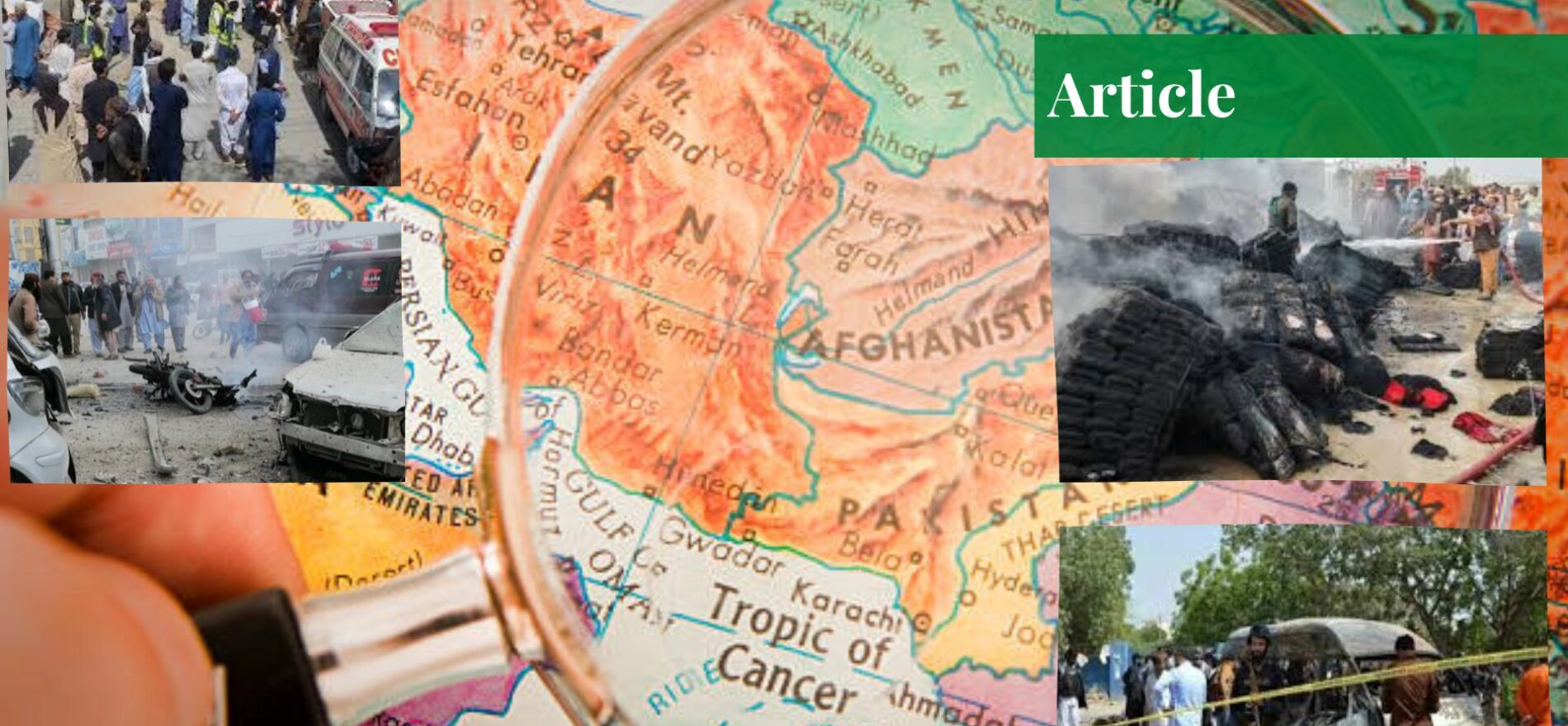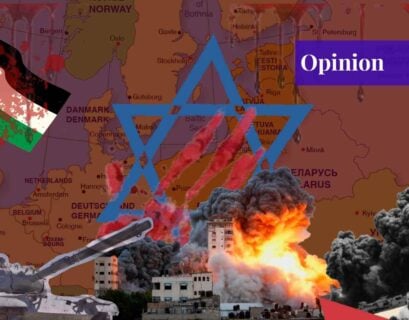Mr Muhammad Hamza Tanvir is an independent journalist and a political analyst, focusing primarily on regional and global strategic and political issues. He has authored numerous articles for different national and international publications.
Rise in Terrorism in Pakistan, Iran & Russia
Recent terror attacks in Moscow, Iran, and Pakistan have raised concerns about surging terrorism in Asia. Although most of these terror attacks were conducted by regional terrorist organizations like the Tehreek-e-Taliban Pakistan (TTP) and the Islamic State (IS), the involvement of foreign hands behind these attacks can not be overlooked. Moscow has blamed Ukraine for the recent attacks, while Iran has accused Israel of conducting terrorism.
Most of the attacks conducted in Pakistan also involved terrorist organizations operating from Afghanistan. Kabul’s takeover by the Afghan Taliban has posed a threat to regional peace and stability. All the terrorist organizations involved in terrorist activities in Pakistan, Iran, and Moscow hold a strong presence in Afghanistan. The nation is serving as the breeding ground for terrorist activities and violence in the whole region. These claims are also corroborated by the Global Terrorism Index’s recent report.
Where Did TTP Get the Weapons From?
Pakistan has even urged the United Nations Security Council (UNSC) to demand Afghanistan cut ties with the terrorist organizations. The Global Terrorism Index reported a 22 percent increase in overall terrorism-related fatalities around the world. Access to modern equipment, technologies, and explosives is the prime reason for this surge in the lethality of terror attacks.
Reports suggest that many Asian terrorist outfits, especially the TTP and BLA, use the weapons left by NATO and ISAF in Afghanistan. Pakistan is already seeking an international probe into the TTP’s access to this weaponry. After the hasty US withdrawal from Afghanistan, Pakistan warned the world that terrorist organizations, especially those affiliated with Al-Qaeda and IS, could access the improperly disposed leftover weapons. Pakistan is not the sole regional country exposed to the menace of the use of this weaponry by terrorist outfits; it equally jeopardizes the peace and stability of other regional states.
Pakistan and the Threat of Terrorism
The use of M4 carbines, AK-74s, M16/A4s, and RPG-7s—all of foreign origin—shows the implications of the premature and hasty withdrawal of the US forces for the whole region and beyond. However, Pakistan became the most affected country by terrorism in the region after the Taliban took over Kabul in August 2021. Pakistan is listed as the 4th most impacted country by terrorism in the world, while Afghanistan, the new safe haven for terrorist organizations, ranked 6th on the list. Islamabad has been repeatedly voicing its concerns about the presence of terrorist outfits in Afghanistan, but the interim Taliban government has always disregarded all such claims.
In the past, the Pakistani military successfully eliminated TTP from the territory of the state. Due to terrorism, the country has experienced the deaths of thousands of Pakistanis – military personnel and civilians. However, the involvement of regional rivals and the Afghan Taliban provided support to the TTP, IS, and BLA and threatened Pakistan’s security. All these groups are using Afghan soil to conduct terrorism against Pakistan. The GTI report categorized all the countries based on terrorist activities conducted inside the states but has not covered the cross-regional links of terrorist outfits operating across the border.
Al-Qaeda holds a stronghold in Afghanistan. According to a report by the United Nations Security Council, Al-Qaeda still holds sanctuaries and training camps in Afghanistan. The group is involved in conducting terrorism in different African countries as well. Members of different terrorist groups operating in Africa, especially Al-Shabab, had been trained by Al-Qaeda.
The Pakistani government has long been voicing its security concerns over the presence of terrorist outfits in Afghanistan but the international community has failed to effectively engage the interim government over this issue. A recent video surfaced on social media, showing the planning of terrorist attacks in Pakistan by the commanders of the TTP and the Afghan Taliban, further strengthening Pakistan’s claims that the interim Afghan government is sheltering terrorist outfits.
Instability and America
The United Nations has also reported that the TTP receives regular aid from the Afghan Taliban. These issues were obvious to arise after the premature withdrawal of the US forces from Afghanistan. The United States’ hasty withdrawal from Afghanistan without establishing any strong national militia or central government after a two-decade-long war raises suspicions that it was all done on purpose to keep the region unstable. The involvement of West-backed IS terrorists in the recent attacks in Moscow further cemented this idea.
A volatile South Asia best serves the interests of the United States. The latter seeks to ensnare Russia and China in regional problems. The United States is hostile to CPEC, the flagship project of the BRI. Continuous terrorist attacks on the CPEC also reveal the involvement of international forces behind these terrorist attacks. All these attacks were conducted by terrorist organizations operating from Afghanistan, which further supports the idea that the United States intentionally left Afghanistan in the hands of the Afghan Taliban.
Conclusion
Regional and international powers need to engage the Afghan Taliban over the presence of terrorist outfits in their country. On the other hand, the Afghan Taliban should also realize that detaching from international terrorist organizations is imperative for their international recognition. The presence of terrorist outfits like Al-Qaeda and IS can also lead to an internal power struggle inside Afghanistan which is detrimental for the regional states and the interim Afghan government as well.
If you want to submit your articles and/or research papers, please check the Submissions page.
The views and opinions expressed in this article/paper are the author’s own and do not necessarily reflect the editorial position of Paradigm Shift.



















